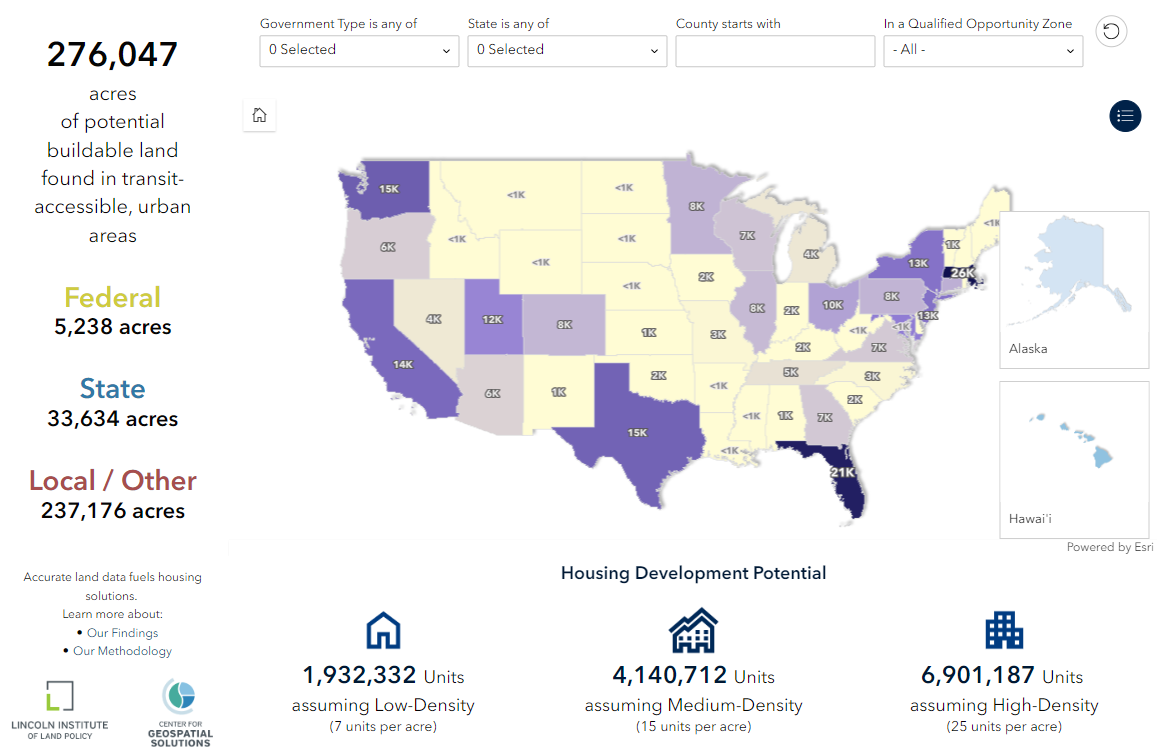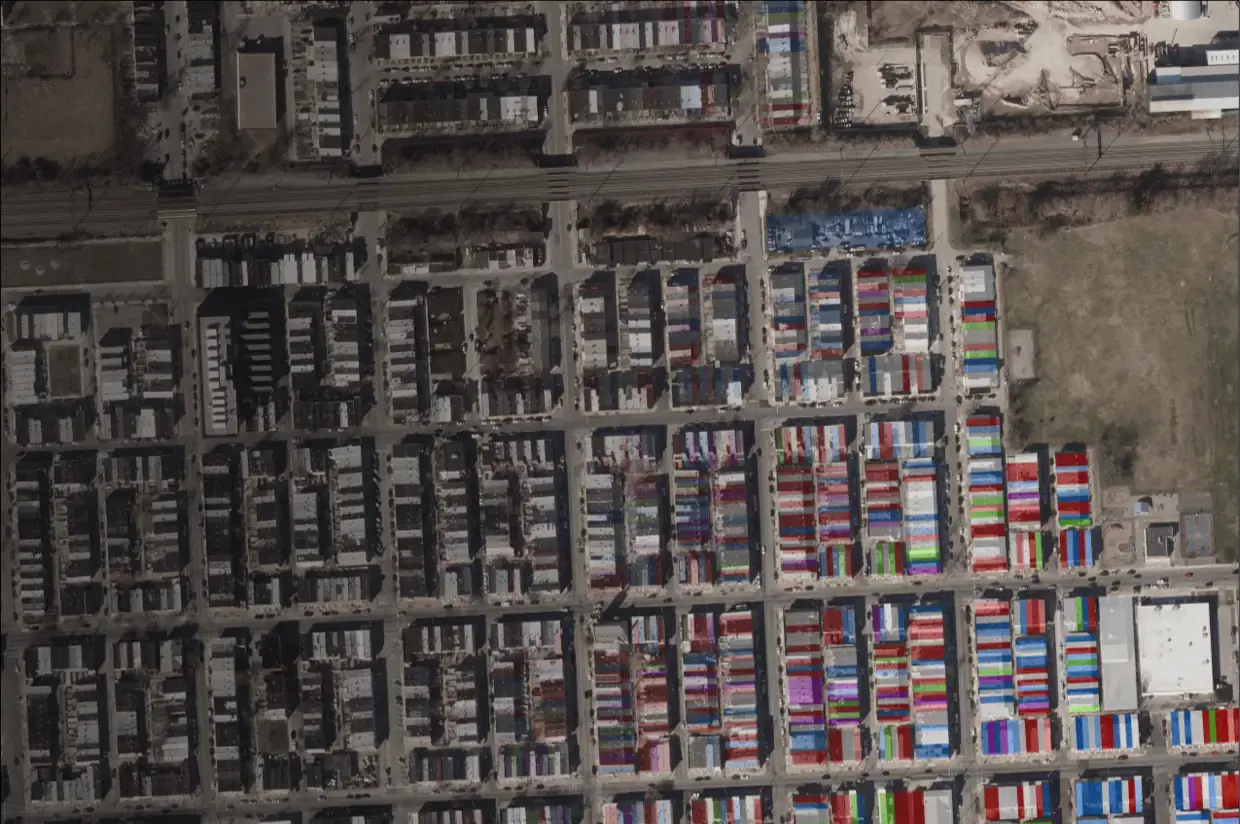Some municipalities have begun to inventory their properties, but this can be a laborious and costly process. Geospatial solutions can help overcome these challenges by providing a unified and efficient approach to identifying and utilizing public land for new housing.
New work from the Center for Geospatial Solutions (CGS) provides a parcel-level examination of development potential on federal, state, and local land holdings. The findings, which leverage our Who Owns America® analysis, offer a comprehensive, data-driven assessment of development potential on government-owned land across the United States.




